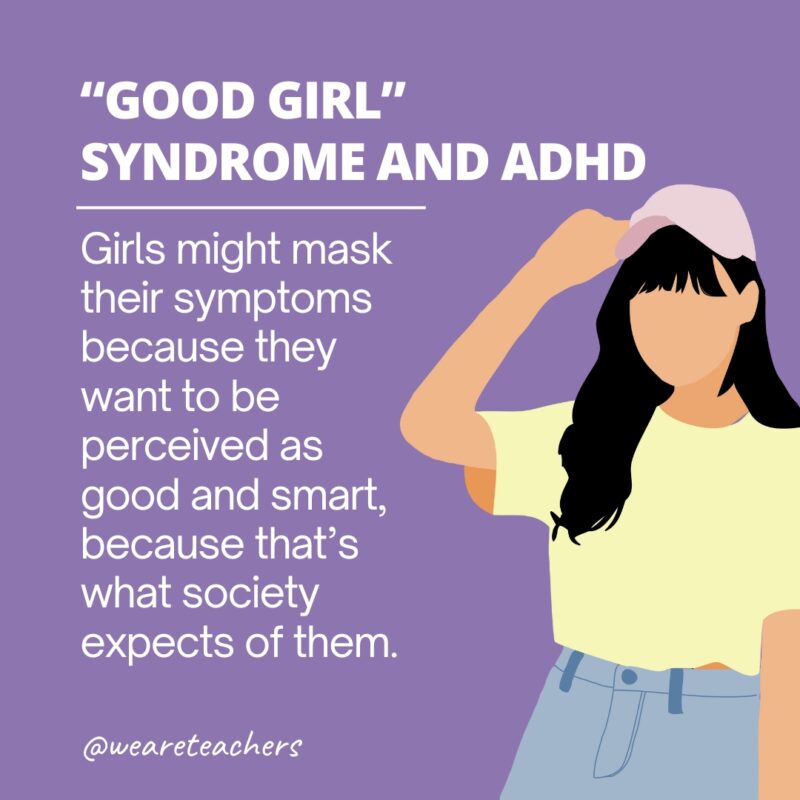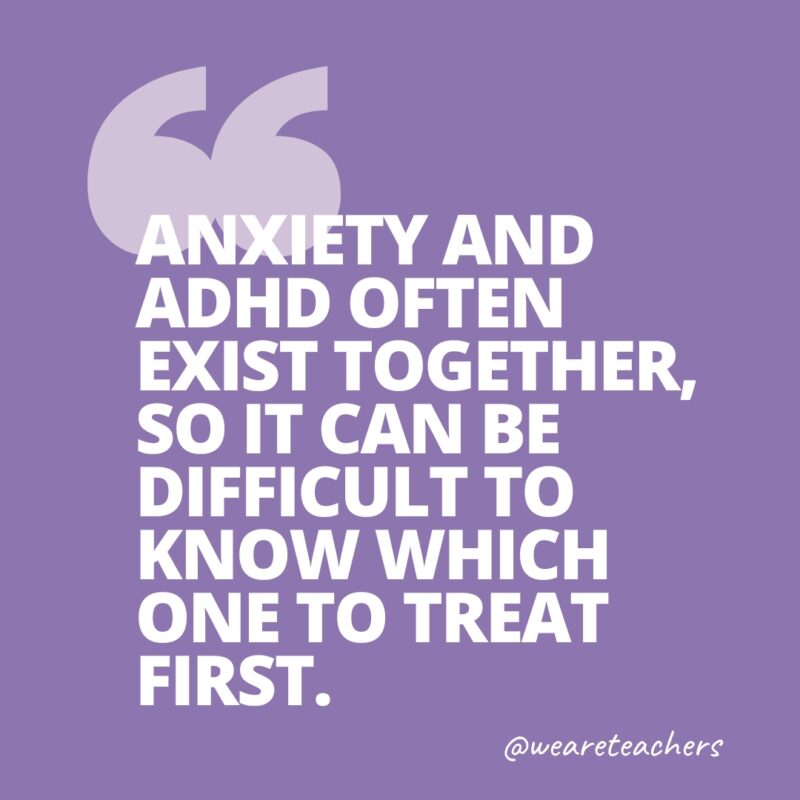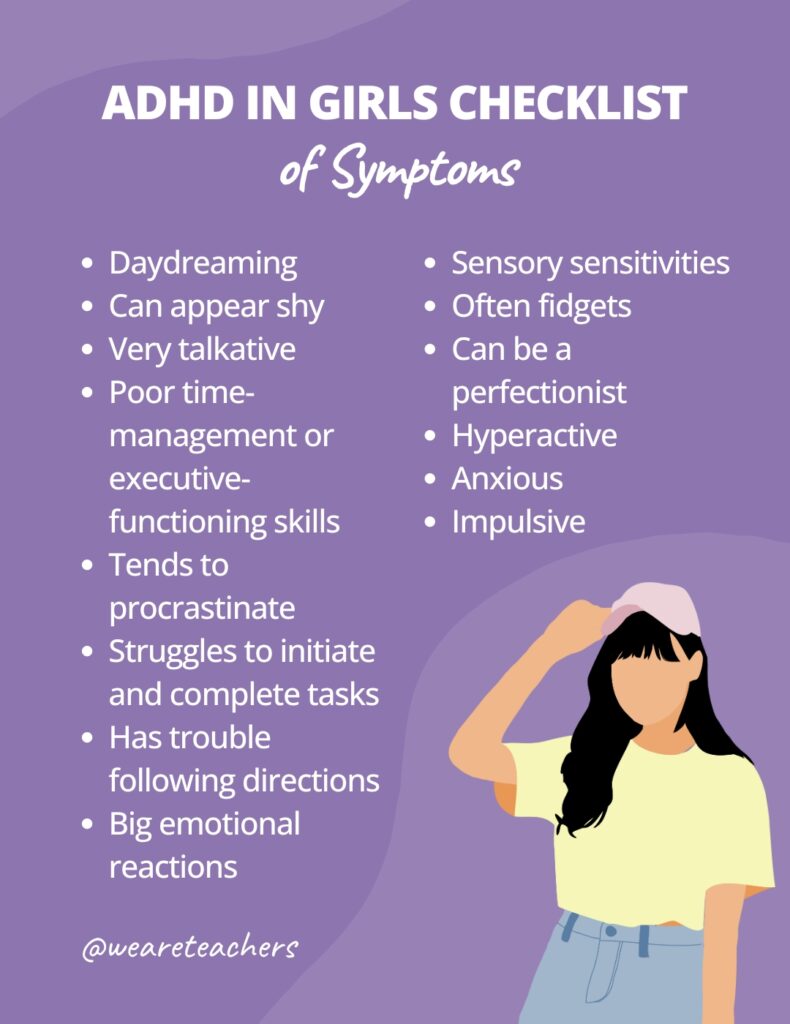
Boys are three times more likely to be diagnosed with ADHD than girls. But do boys actually present with ADHD that much more frequently? The short answer is no. We are learning more and more about ADHD and how it affects adults and children alike, and we now know that there are significant differences across gender. Because of these differences, ADHD in girls is easier to miss. Being aware of specific ADHD symptoms in girls can help get them diagnosed, which could make a significant impact on their success in school and in their lives. Read on to learn more and hear from an expert on girls and women with ADHD, and check out our ADHD in Girls checklist.
I had the pleasure of speaking with Dr. Rebecca Richey, a Colorado-based psychologist who specializes in ADHD in women and girls, to learn more about why ADHD looks different for girls and how we can support them in the classroom.
What are the main differences in ADHD symptoms among boys and girls?
There are three types of ADHD: hyperactive, inattentive, and a combination of both. On average, boys with ADHD tend to be more hyperactive, which is more obvious in the classroom. According to Dr. Richey, this often looks like disruptive behavior and might include being vocal and interrupting, poking other kids, jumping off monkey bars, and possibly engaging in unsafe behaviors. In this way, ADHD symptoms in boys are more external.
Girls, on the other hand, often internalize their symptoms. If they can’t focus, rather than bouncing off the walls, girls might stare out the window, doodle, or read under their desks. Often, girls have what Dr. Richey describes as “Good Girl syndrome.” If they don’t understand something, they might not raise their hand and ask their teacher to repeat it. They don’t want to be embarrassed. Often, girls with ADHD have perfectionist tendencies, so they will work very hard to get things right.

Society expects girls to do a good job and be good students, so they might work extra hard to learn the material independently rather than ask for help. These societal expectations can reinforce patterns and often encourage girls to keep their struggles to themselves.
Dr. Richey also explains that “just because a girl is getting good grades doesn’t mean she doesn’t have ADHD.” Thankfully, there has been a recent shift in understanding this. Historically, the stereotype for diagnosing ADHD was that students had to be failing and not doing well in school. But for girls, this is often not the case. Girls are more likely to mask their symptoms and struggle internally but do whatever it takes to still do well in school.
Teenage girls and ADHD
Women, girls, and people who are gender diverse might experience a lot of pressure and have to fight against a lot of misunderstandings about ADHD. Dr. Richey explains that teenage girls who have ADHD might have trouble paying attention in school and struggle to manipulate the information they are learning and get it back out. She says, “If they look around at what everyone else is doing, they might ask themselves why am I working three times as hard to get the same grades, and that gets internalized.”
Teenagers with ADHD might also display learned helplessness. They might feel like no matter how hard they work, they can’t get the best grades. Socially, they may feel different from their peers but can’t articulate why. They may feel inadequate and develop low self-esteem as a result.
Parents might also think that a teenage girl’s struggle might be due to anxiety rather than ADHD. While these two conditions can overlap, anxiety can be a by-product of ADHD. So if you treat the ADHD, the anxiety might get better or go away entirely.
The importance of getting a diagnosis
Many overlapping conditions can coincide with ADHD, including depression, anxiety, substance abuse, and eating disorders. Dyslexia is also common in girls with ADHD. This makes getting a diagnosis early that much more important. More and more adult women are getting diagnosed with ADHD. It’s great to see awareness, but we want to encourage girls to get tested sooner. So, what are the steps to getting a diagnosis?
Dr. Richey recommends that families start with their primary care physician, who can provide families with resources in their area for further testing. Alternatively, if you can develop a list of private resources and places that accept insurance, it might speed up the process. Getting tested by professionals who specialize in girls with ADHD is a plus but not necessary.
Even some doctors may not recognize ADHD in girls because of their own preconceived notions of what ADHD looks like. Advocating for girls and sharing observations can be so helpful in getting them a diagnosis.
Since there are often overlapping symptoms with other conditions, it helps to start treating one and go from there, Dr. Richey suggests.

Anxiety and ADHD, for example, often exist together, so it can be difficult to know which one to treat first. Dr. Richey suggests that starting to treat one or the other may clarify which one is more prevalent. If taking ADHD medication reduces a girl’s anxiety, then it might tell you that anxiety is coming from ADHD symptoms.
Another way to help tease out the differences is for families to complete a clinical interview during the evaluation process. Hearing family members’ perspectives can be invaluable for diagnosing ADHD in girls.
What accommodations and supports can we provide girls in the classroom?
One way we can support girls with ADHD in the classroom is to give them preferential seating. Girls with ADHD tend to be either on or off, Dr. Richey says, and once they are off, or no longer focused, it’s much harder to get them to reengage. Letting them sit front and center can help them stay focused on instruction and not get distracted by everything going on in the classroom. Chances are they will want to sit there too, because it will help them feel more confident. For classroom discussion, girls with ADHD might feel best if everyone is participating, and it will help keep all students engaged and interested.
Another great strategy to support ADHD students, says Dr. Richey, is incorporating project-based learning in the classroom. When people with ADHD are interested in something, they can focus extremely well. This is known as hyper-focus. If we help students discover topics and read what they are excited about, it might make all the difference.
Another possible tool for help in the classroom is medication. Dr. Richey explains this is a hot topic for many families and is a highly individual decision. But it’s important to consider if students are significantly struggling. Studies suggest that if children with severe ADHD don’t take medication, they are more at risk for substance abuse and social defiance as adults. Medication doesn’t have to be the first course of action, but it could be a life-changing strategy for some girls who are struggling.
ADHD in Girls Checklist of Symptoms

ADHD can look very different in girls, but among girls, there can be so much variability too. The differences in symptoms can make it tricky to diagnose. But here’s a checklist of possible ADHD symptoms that girls may experience:
- Daydreaming
- Can appear shy
- Very talkative
- Poor time-management or executive-functioning skills
- Tends to procrastinate
- Struggles to initiate and complete tasks
- Has trouble following directions
- Big emotional reactions
- Sensory sensitivities
- Often fidgets
- Can be a perfectionist
- Hyperactive
- Anxious
- Impulsive
Special thanks to Rebecca Richey for her contribution to this article! She is based in Denver, Colorado, and you can learn more about her work with ADHD in girls and women on her practice’s page at Colorado Women’s Collaborative Healthcare.